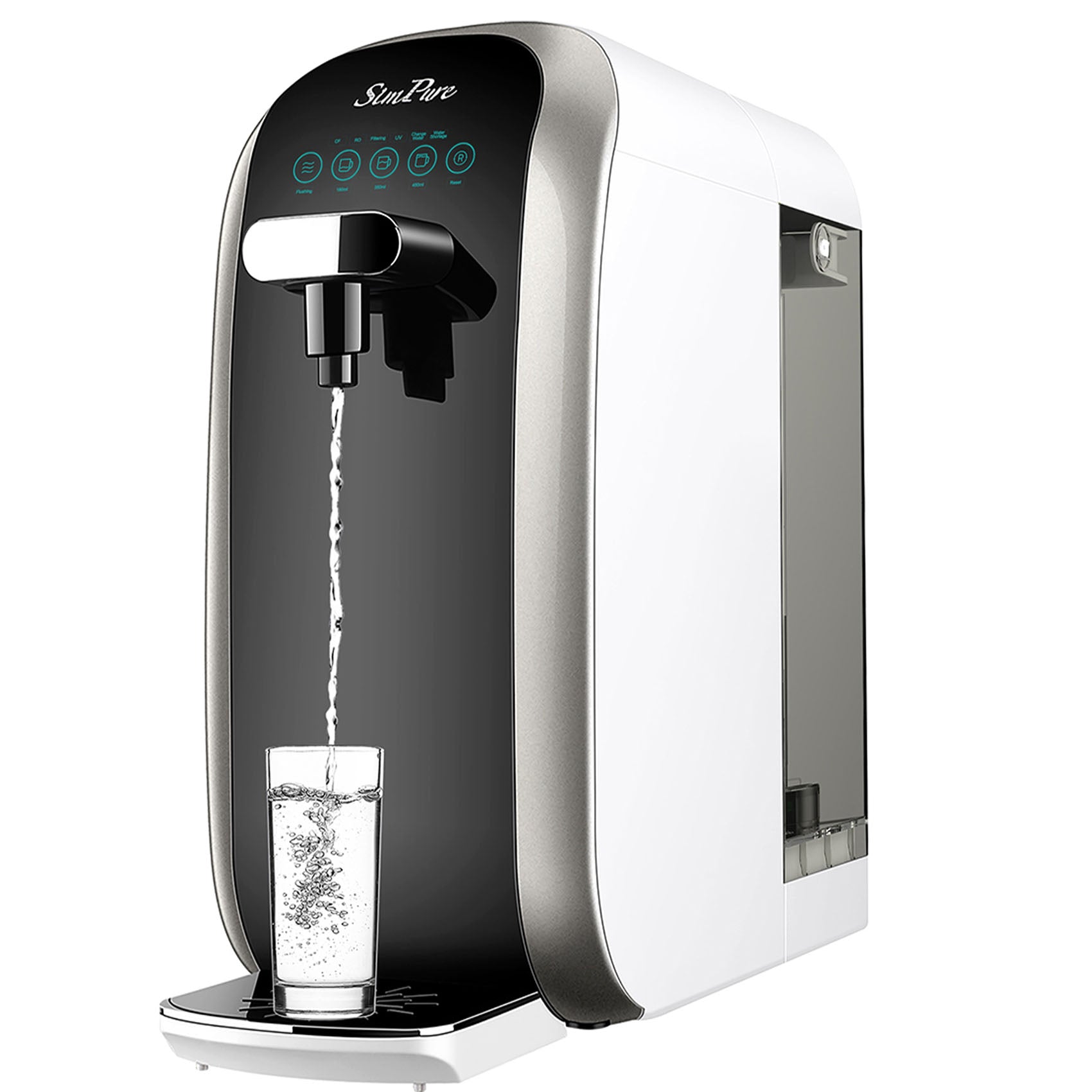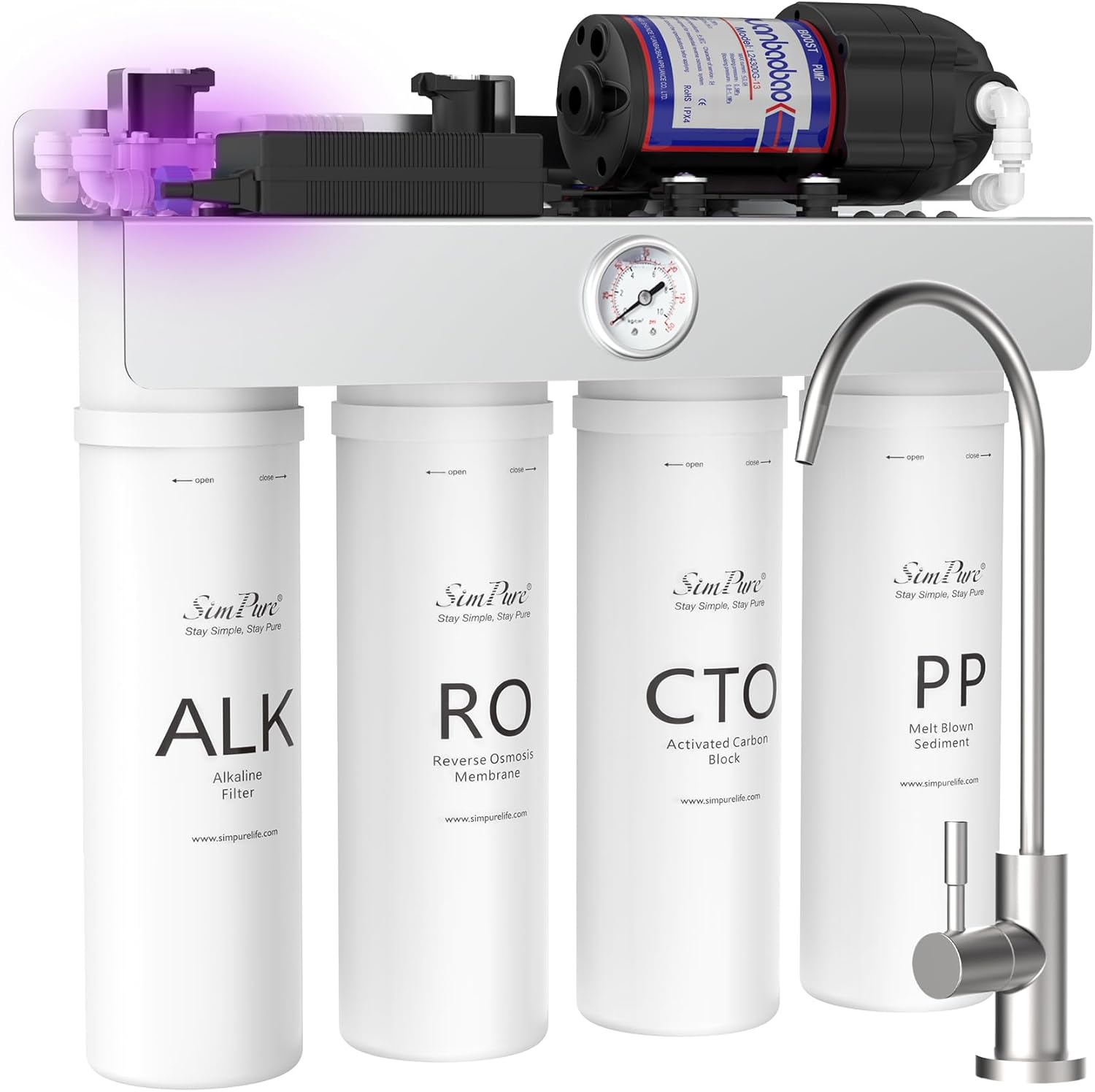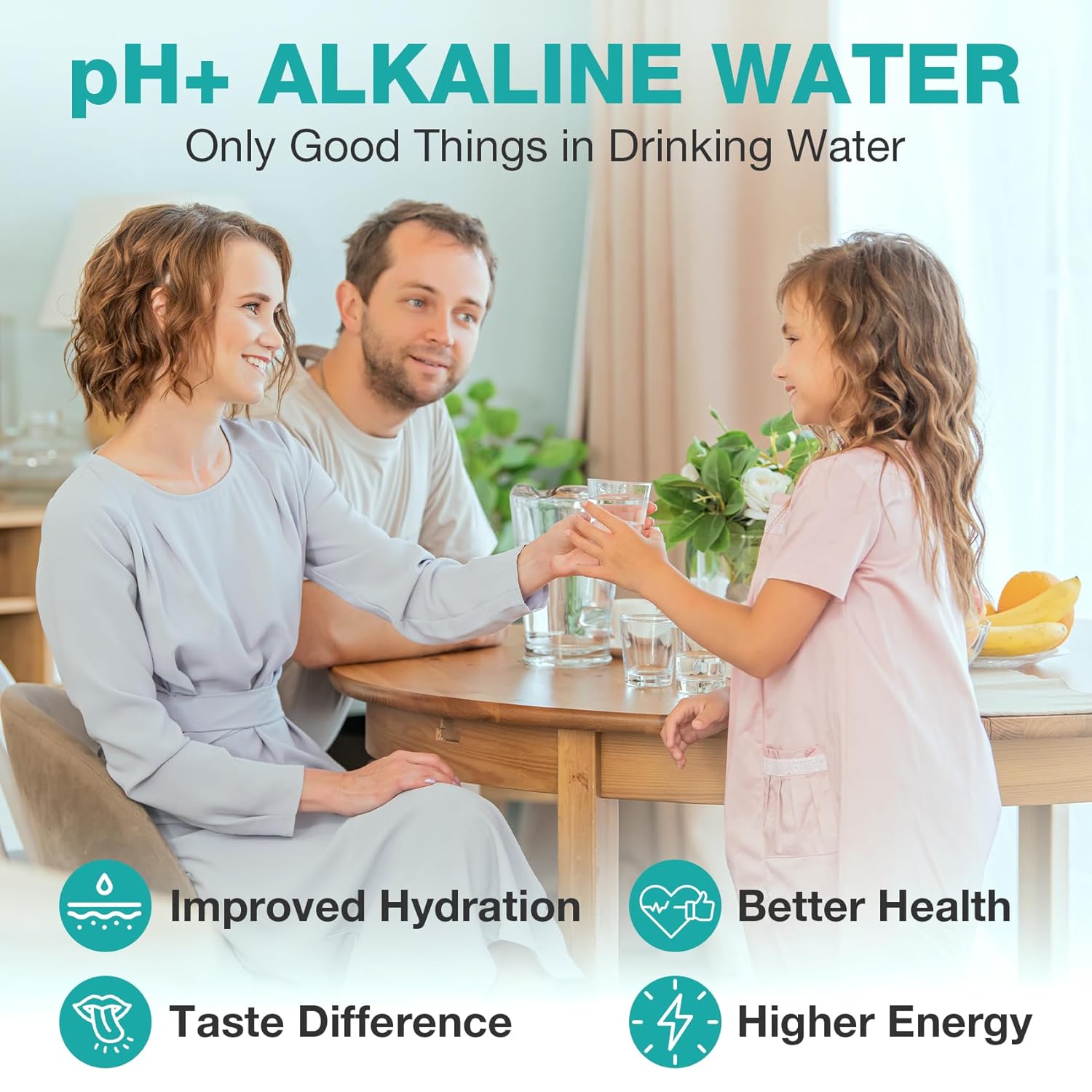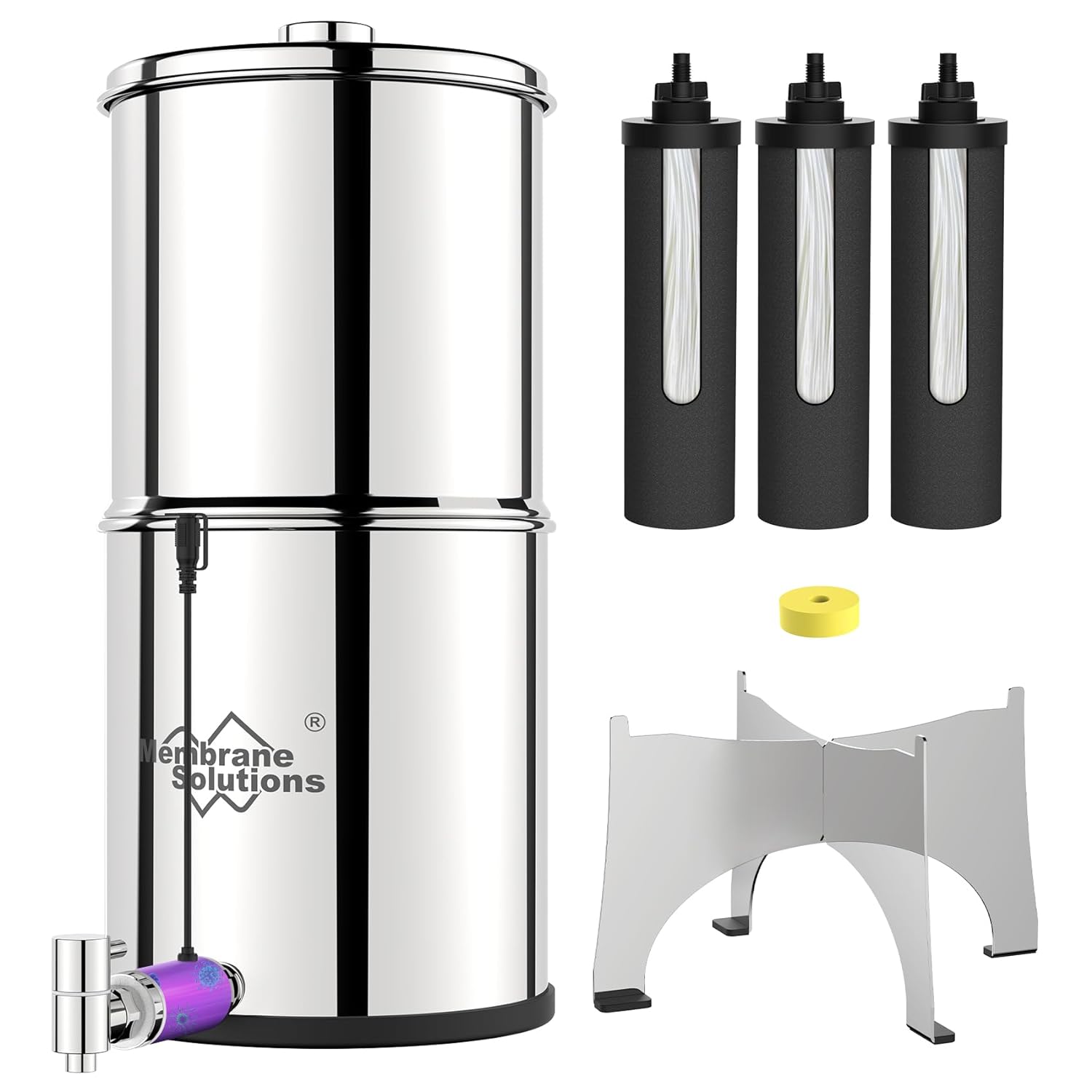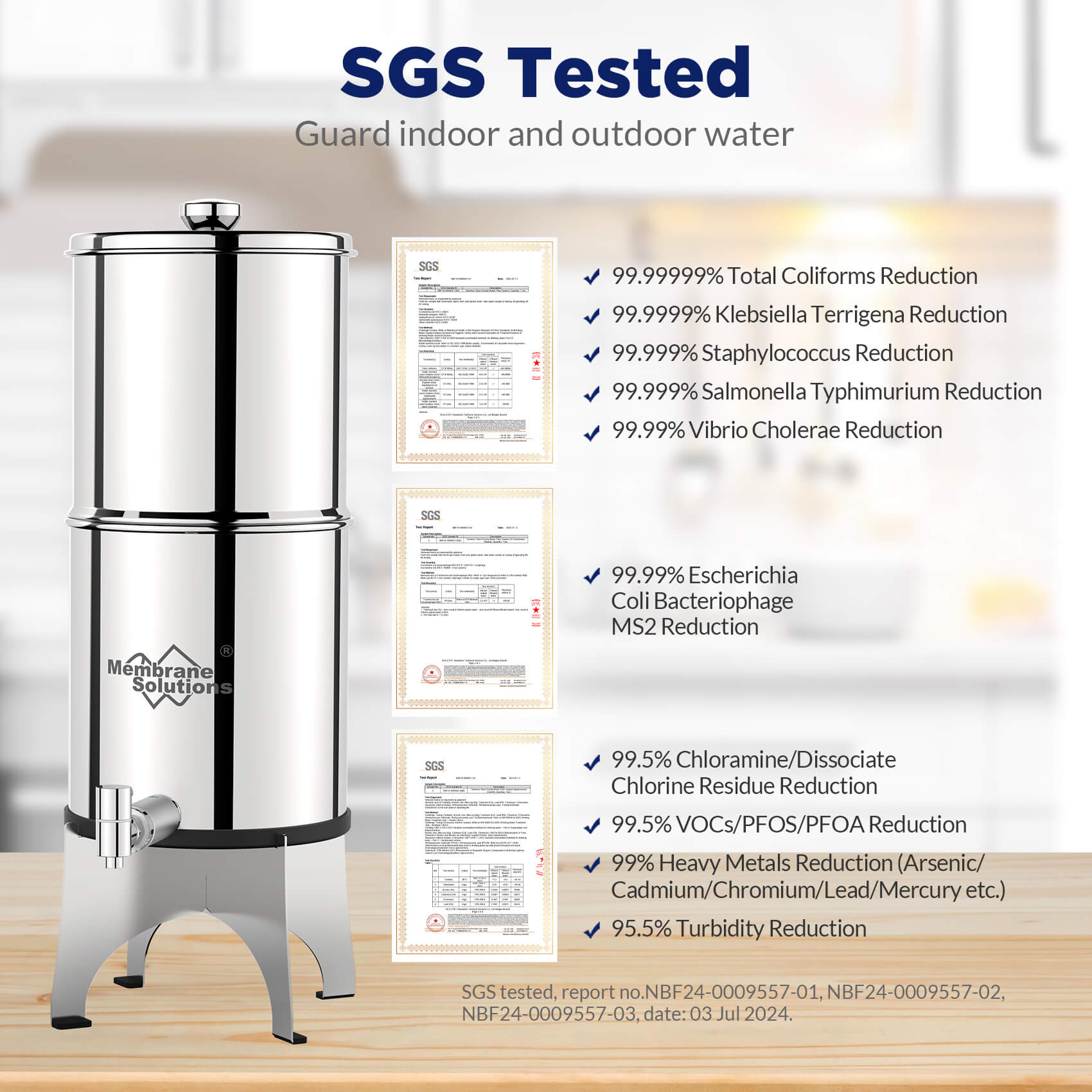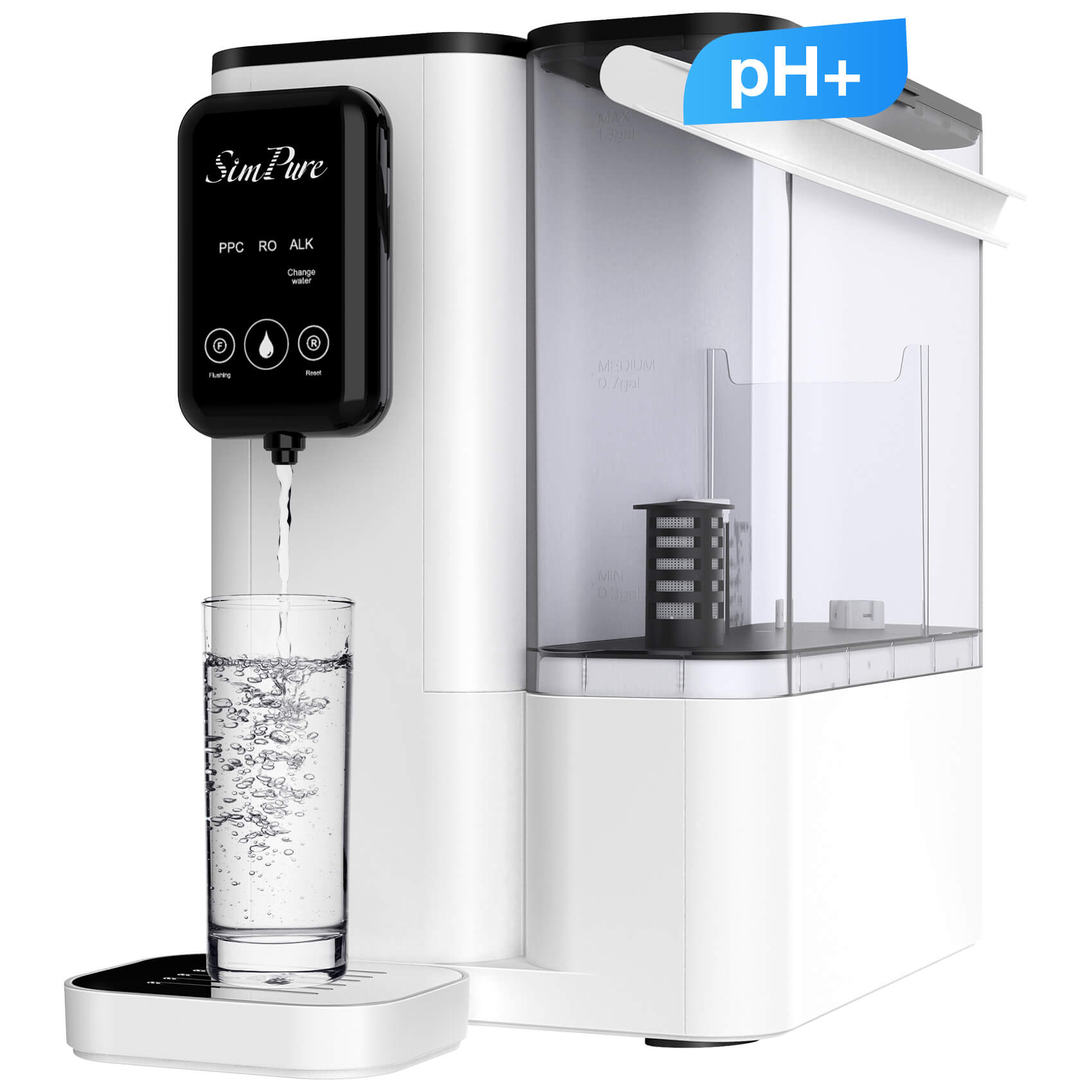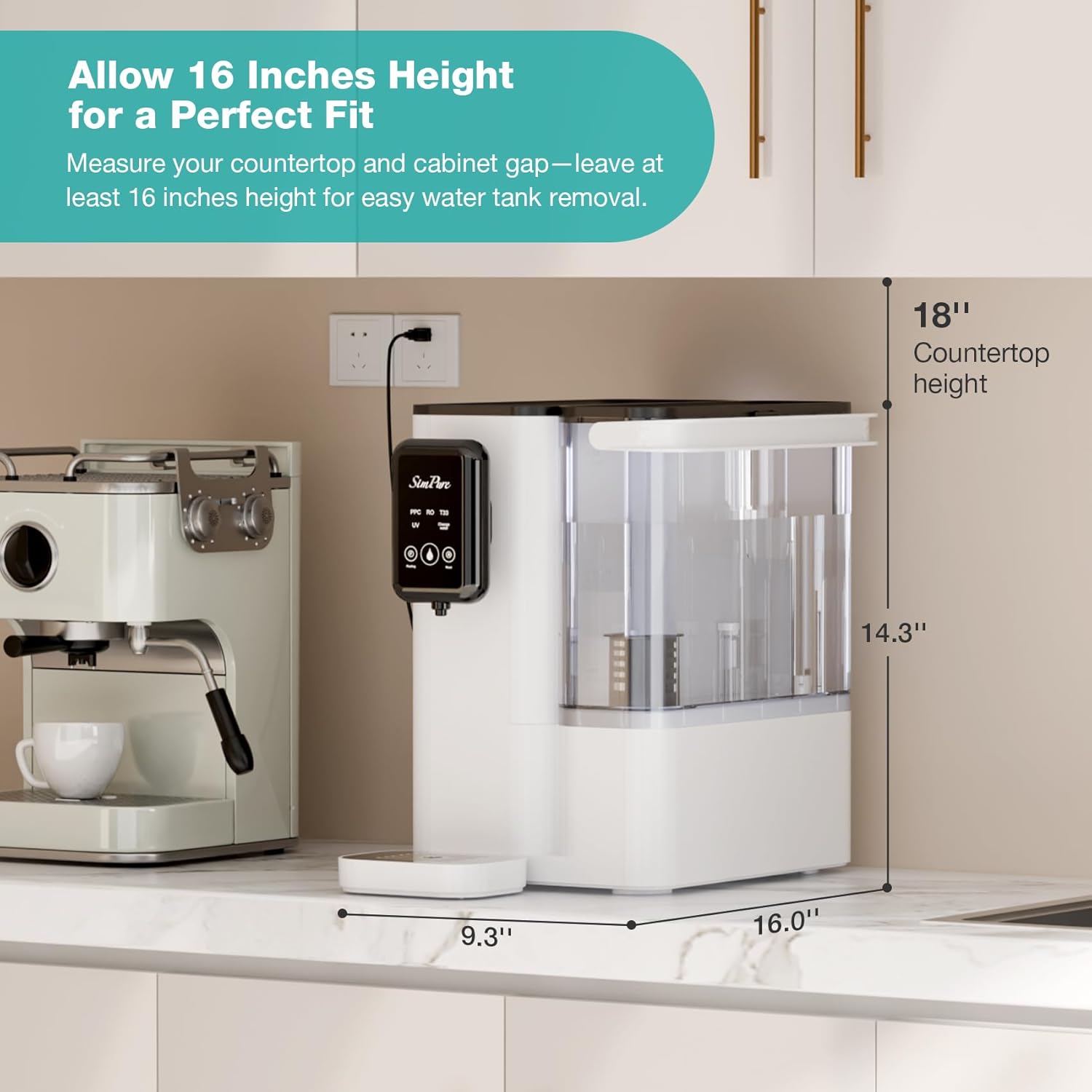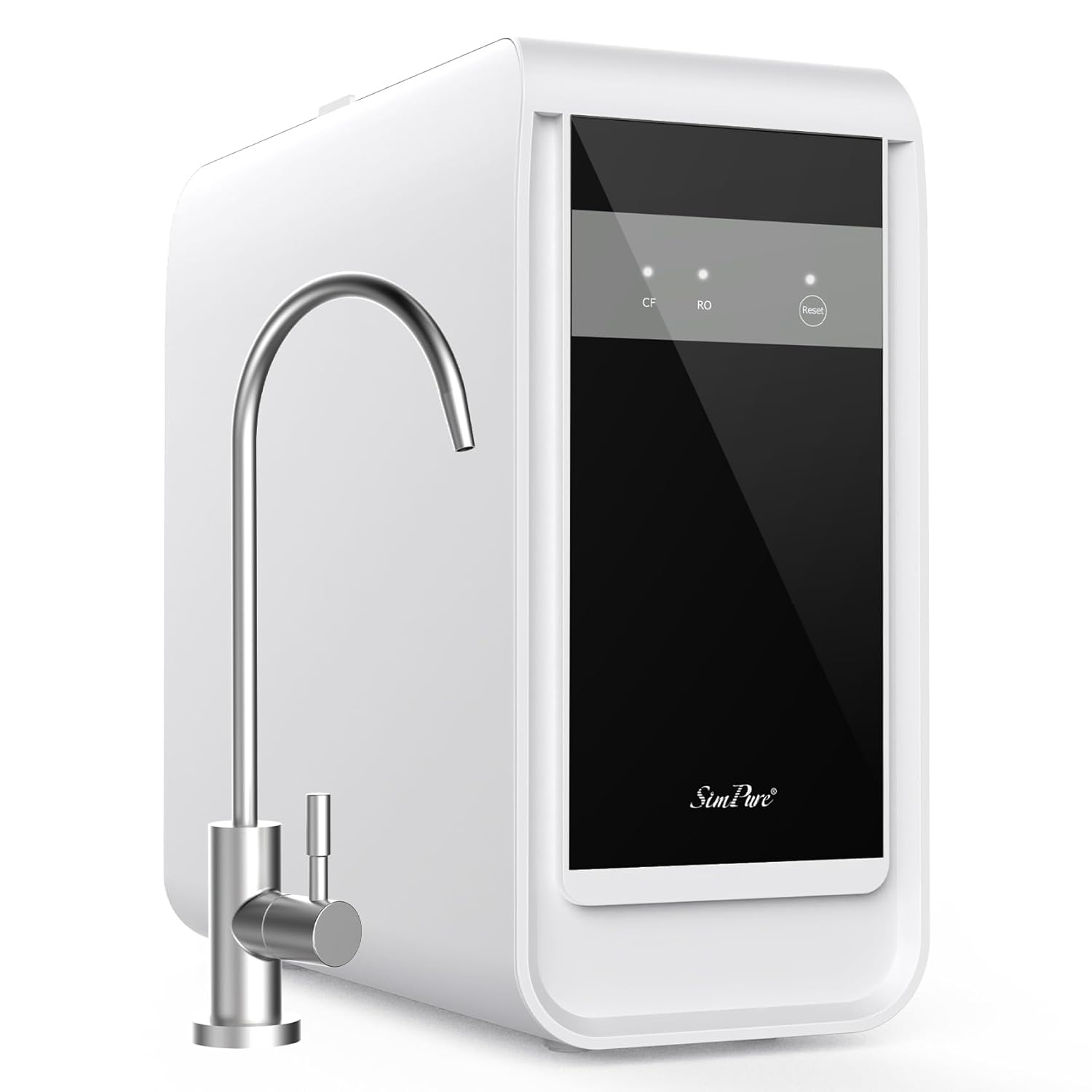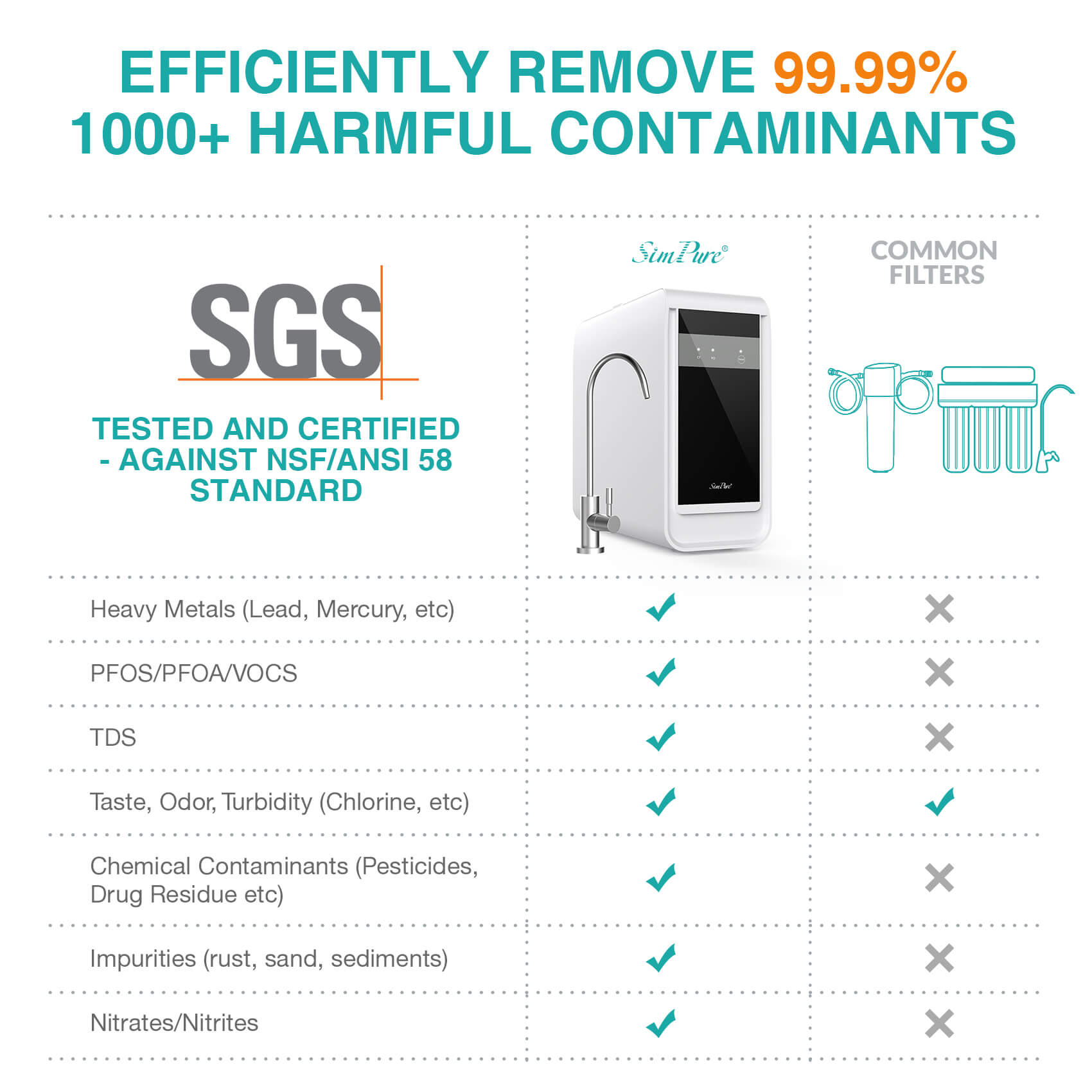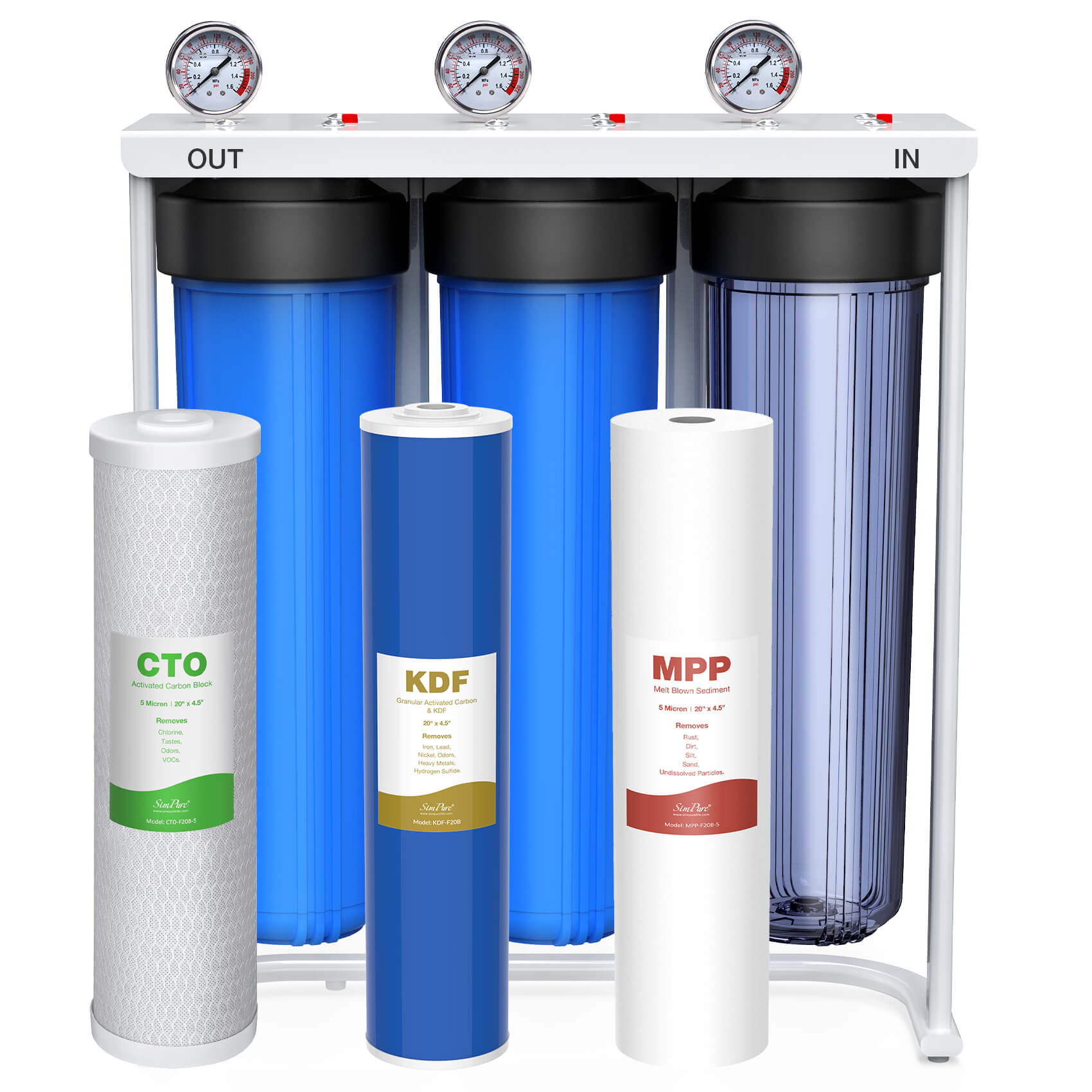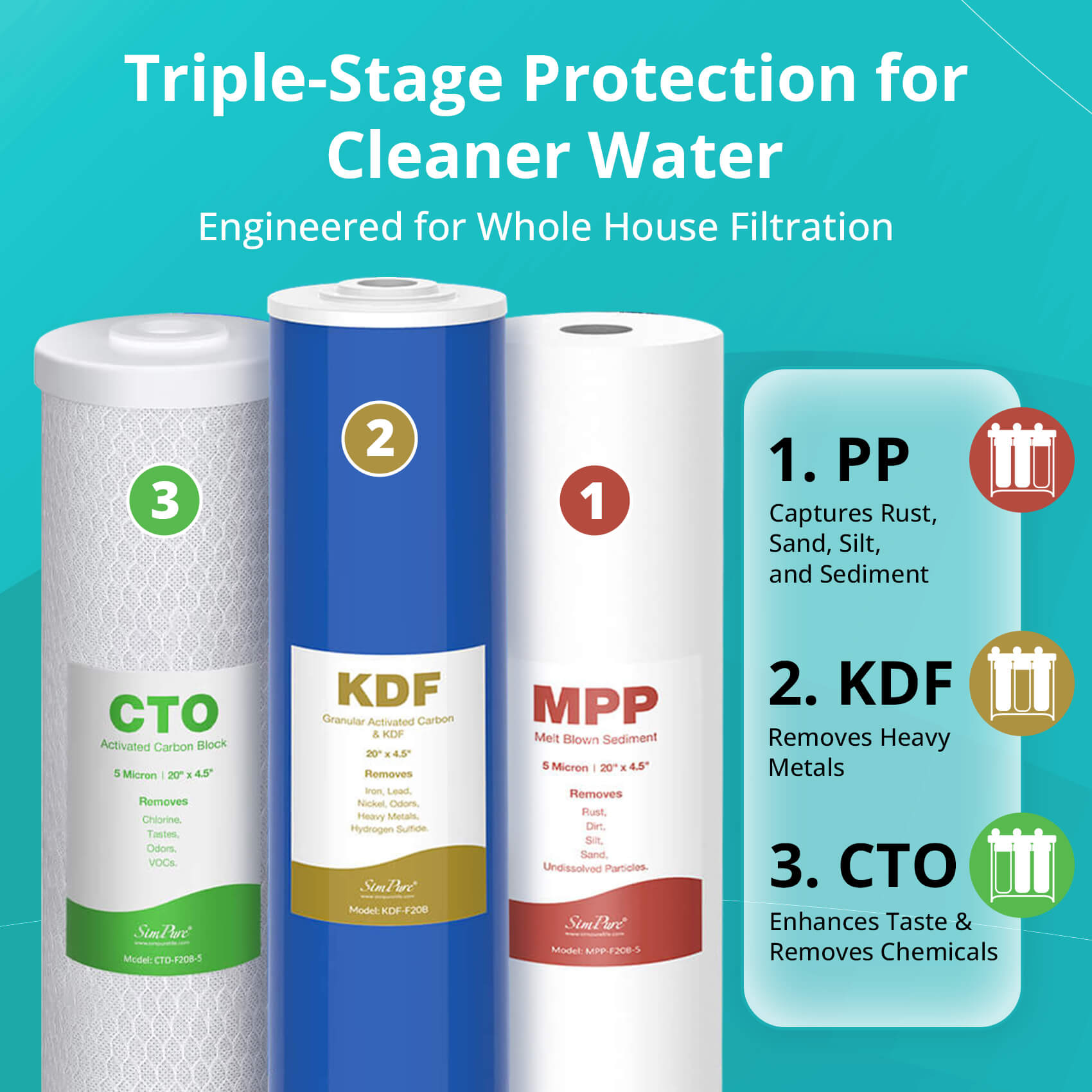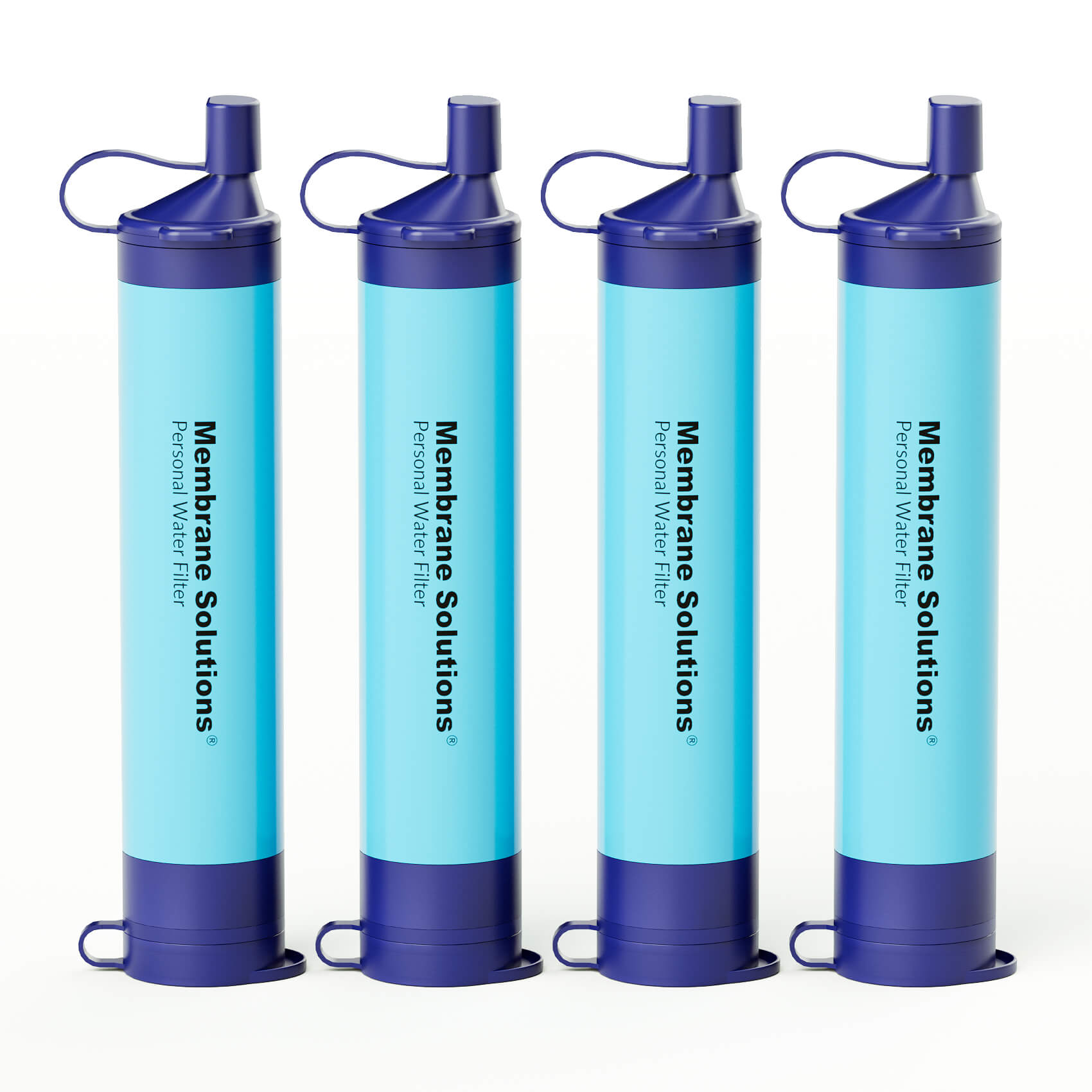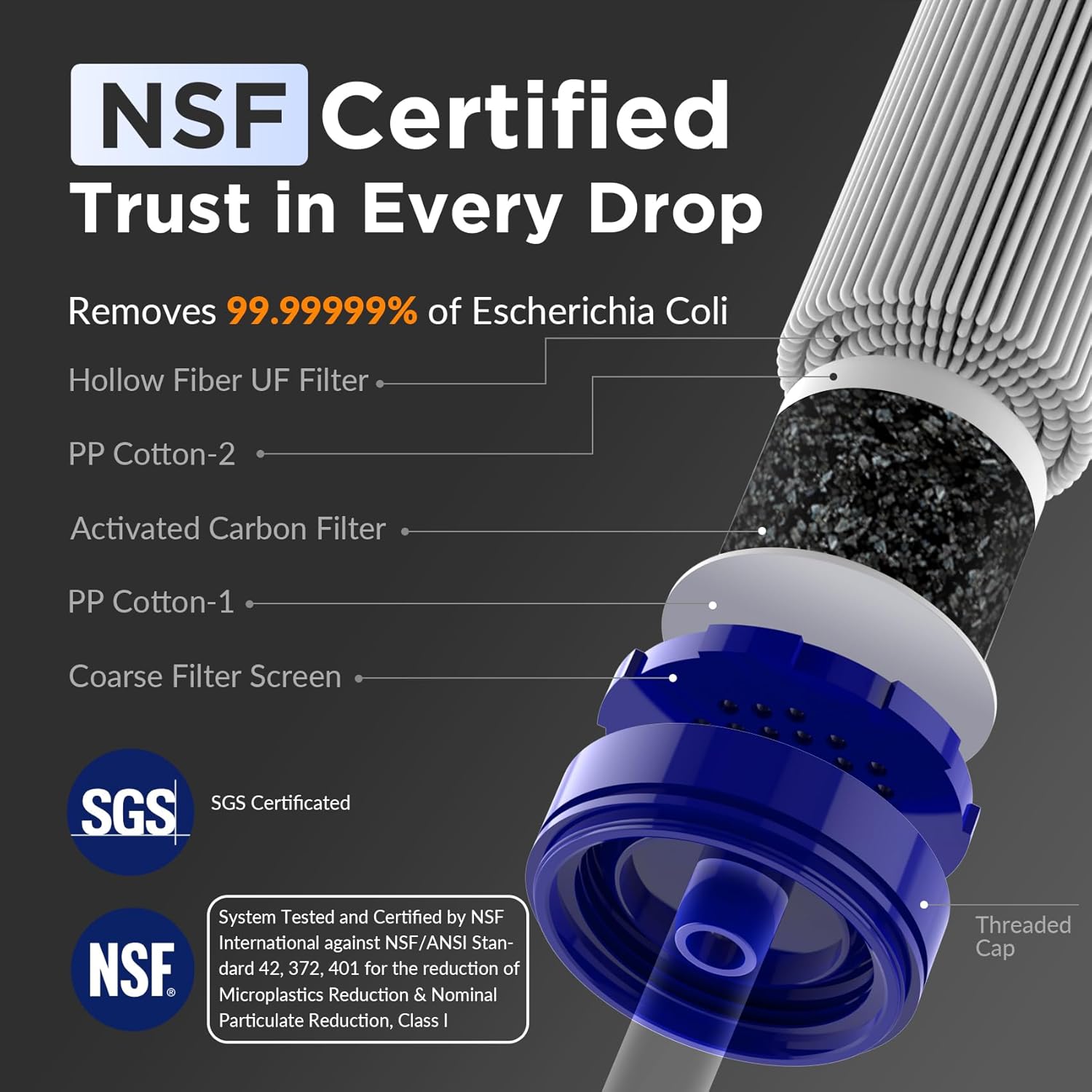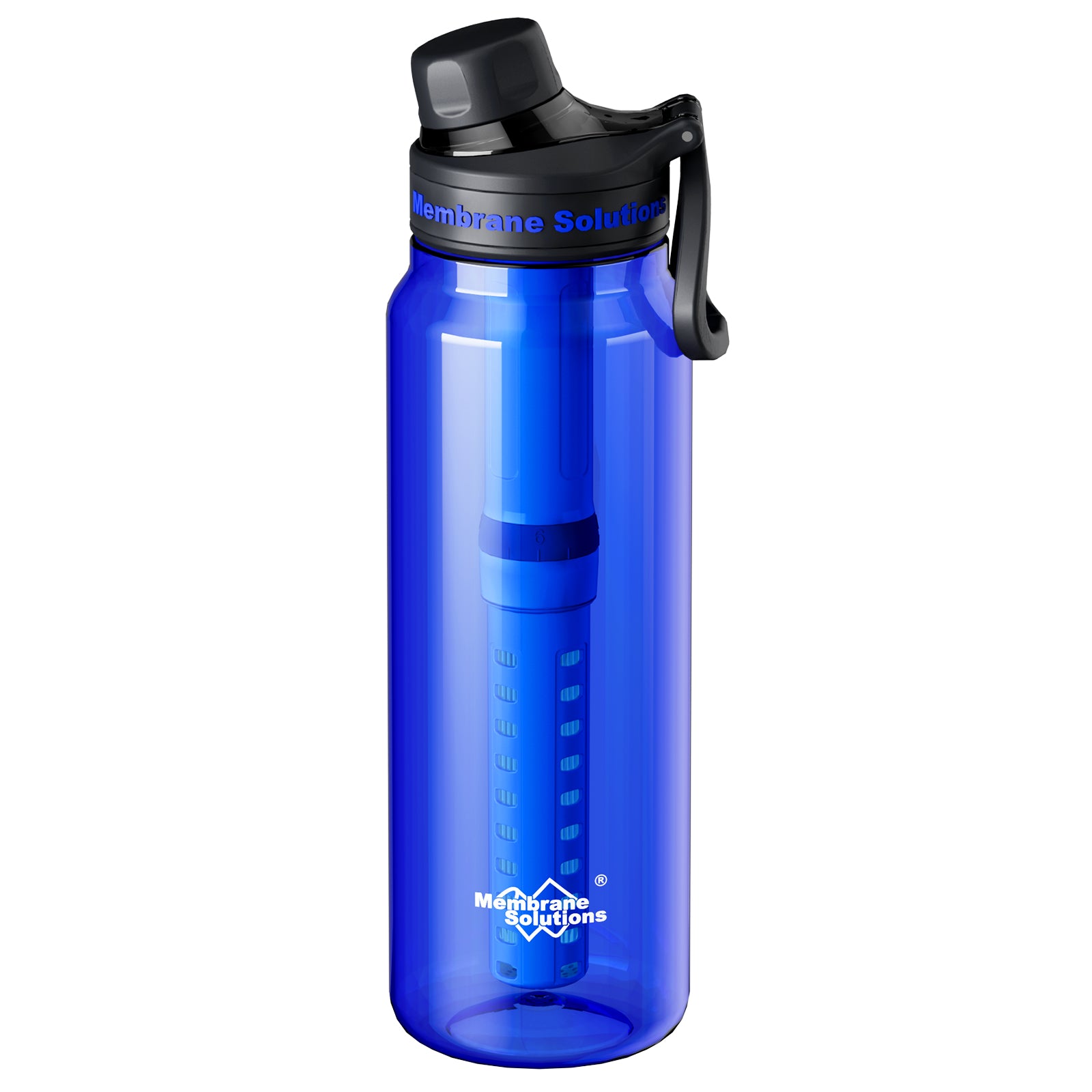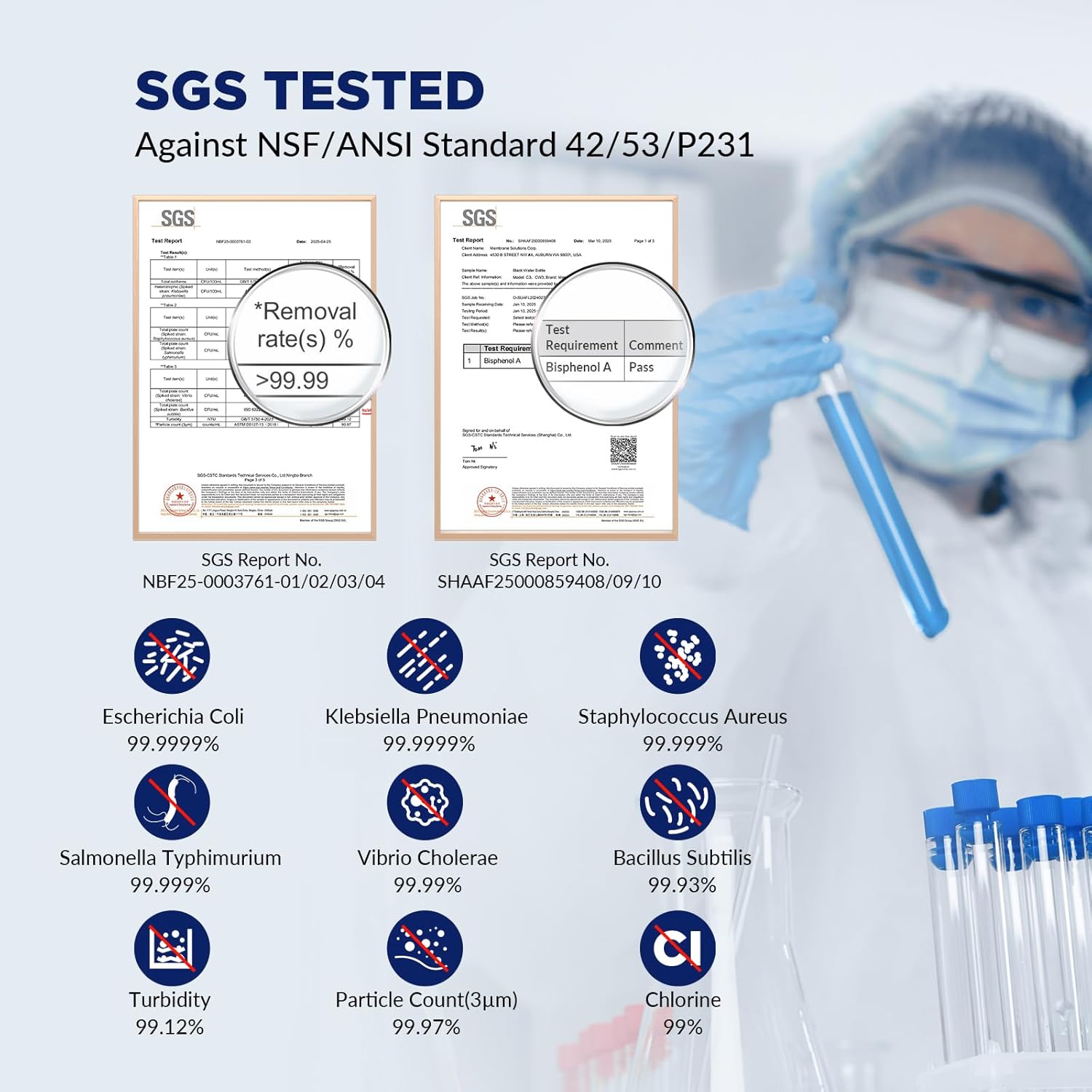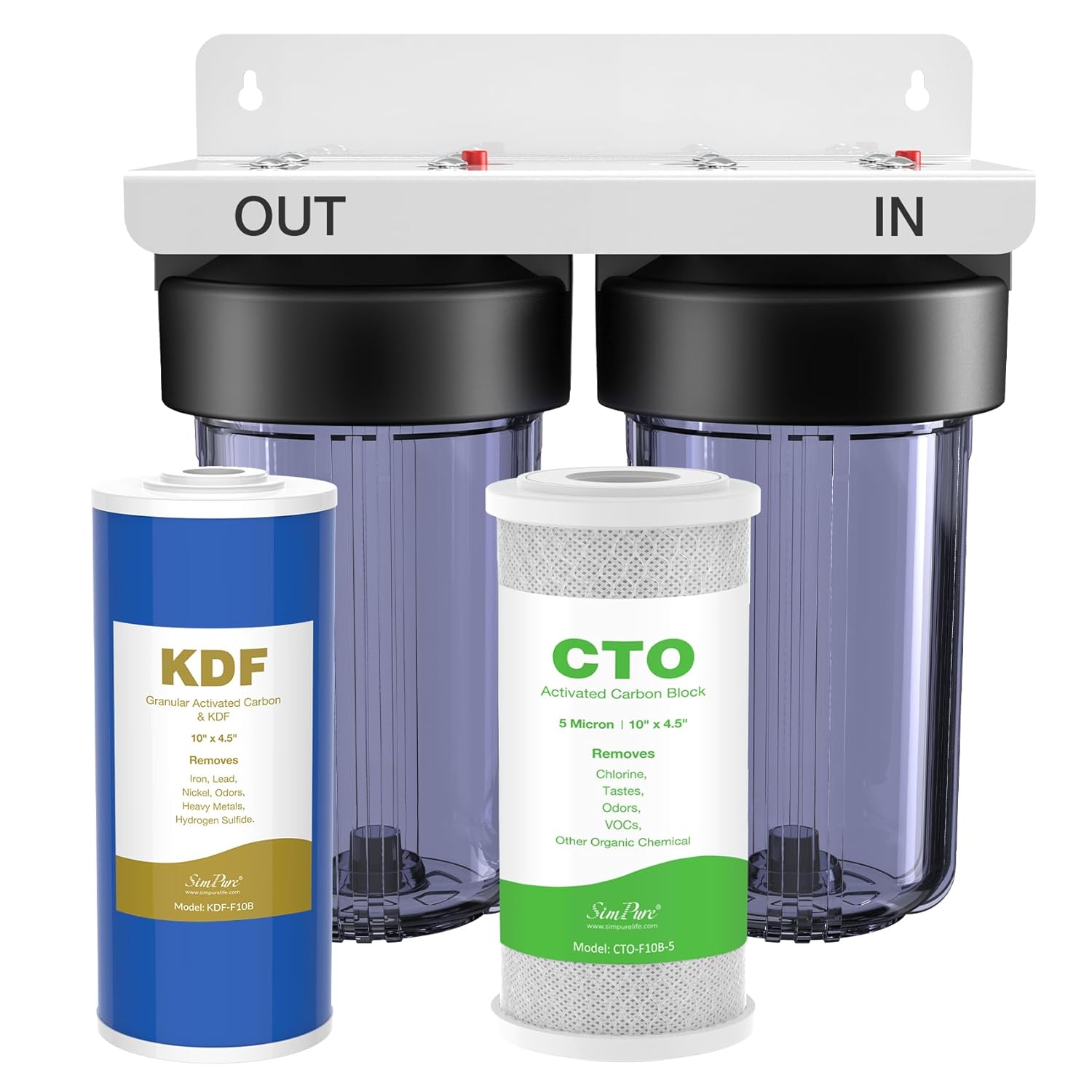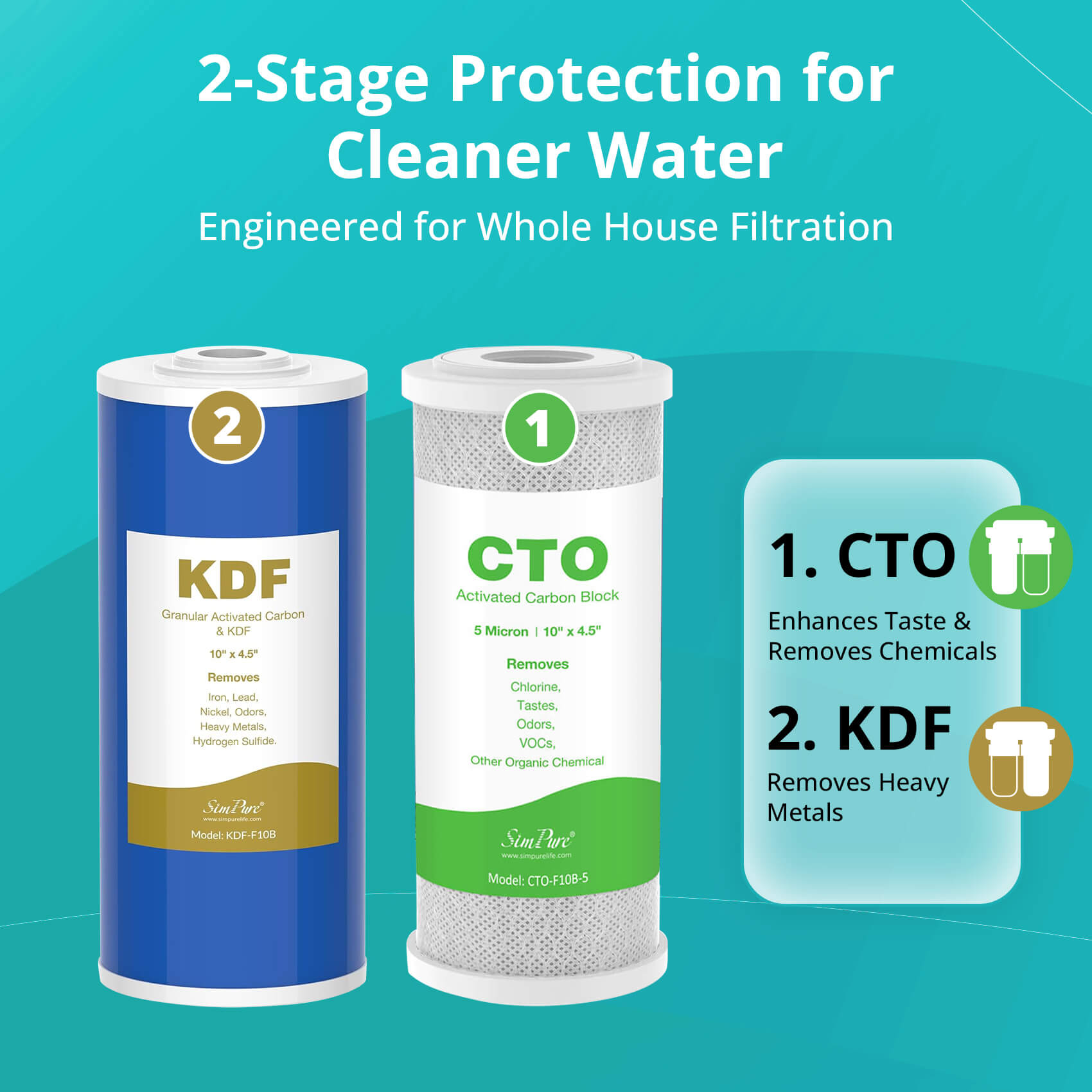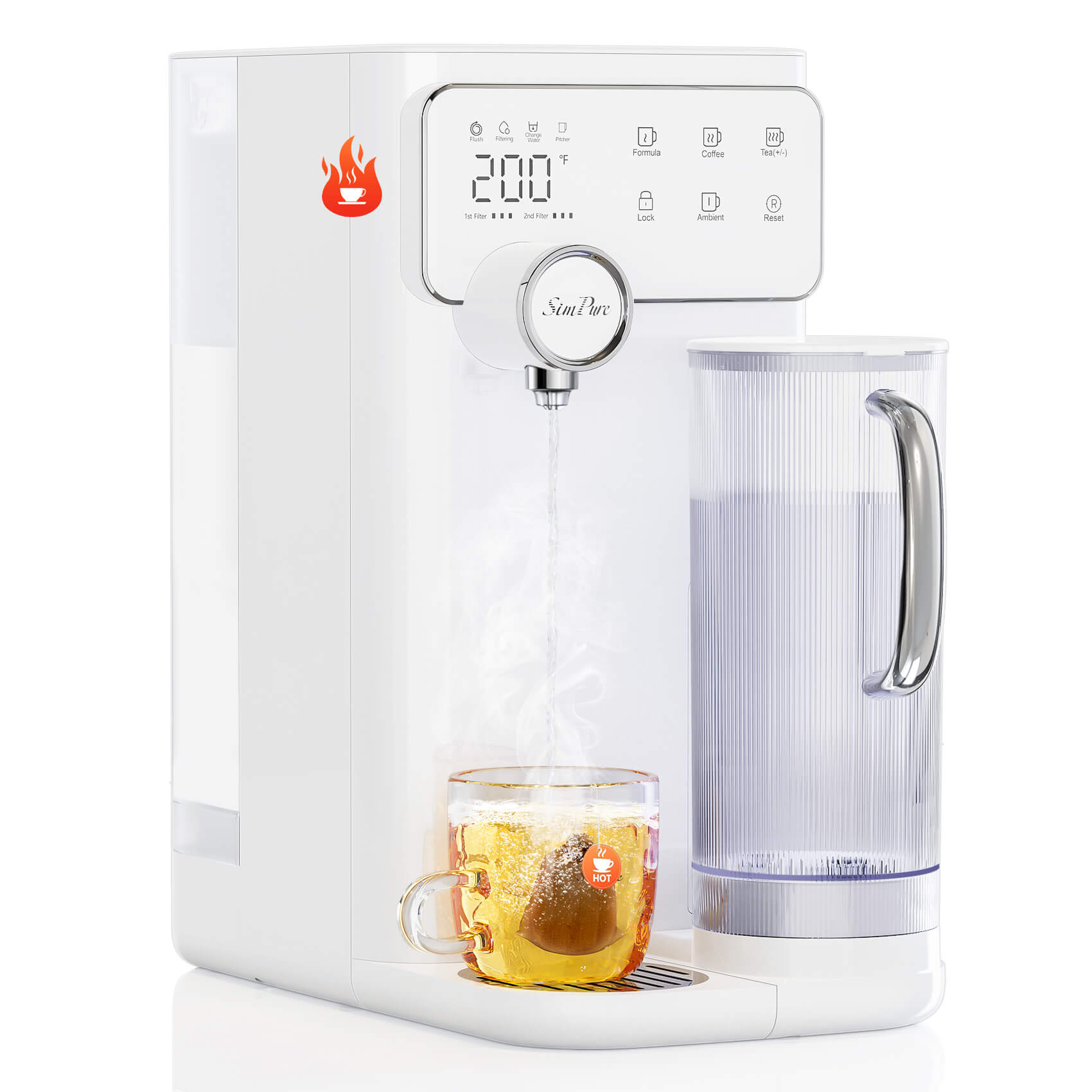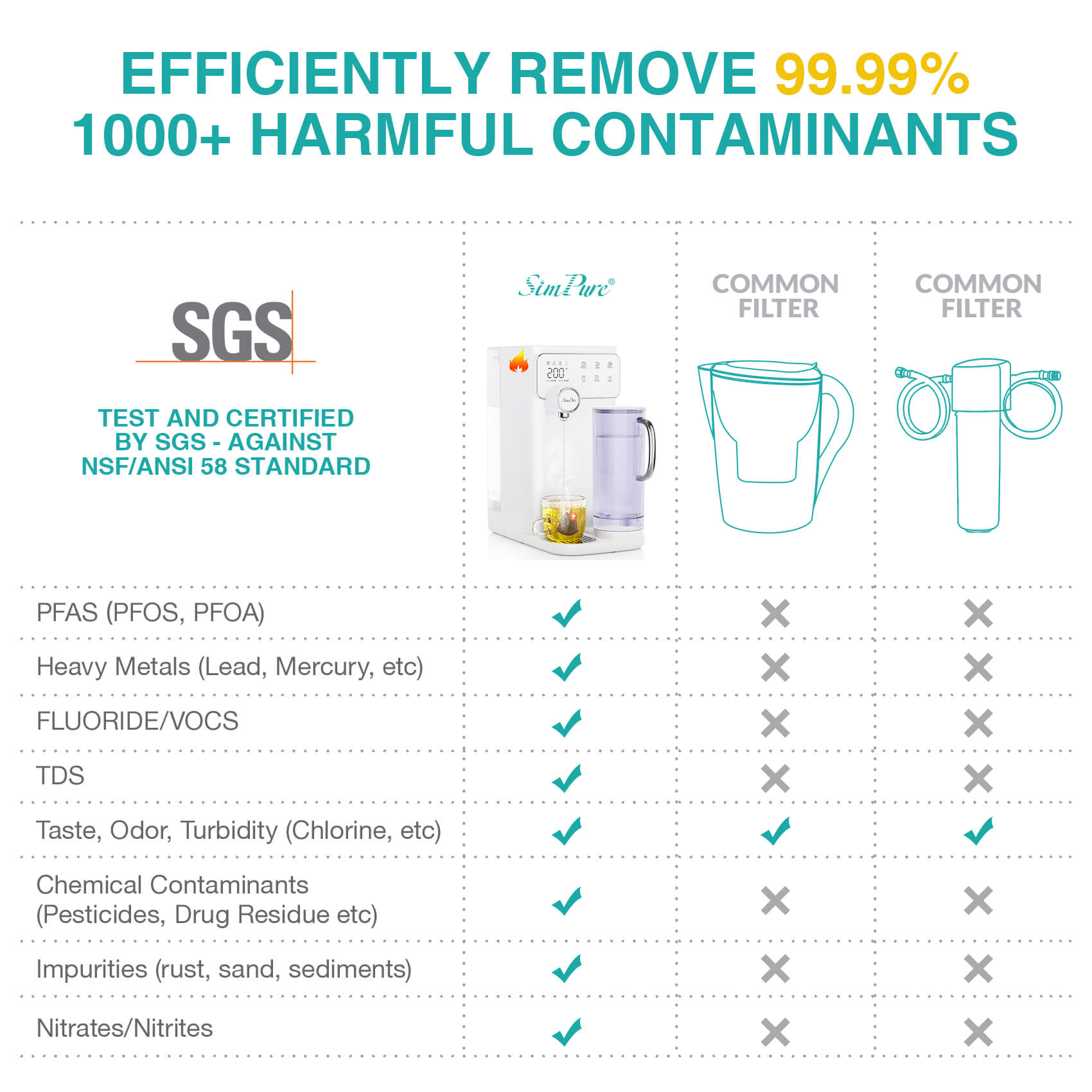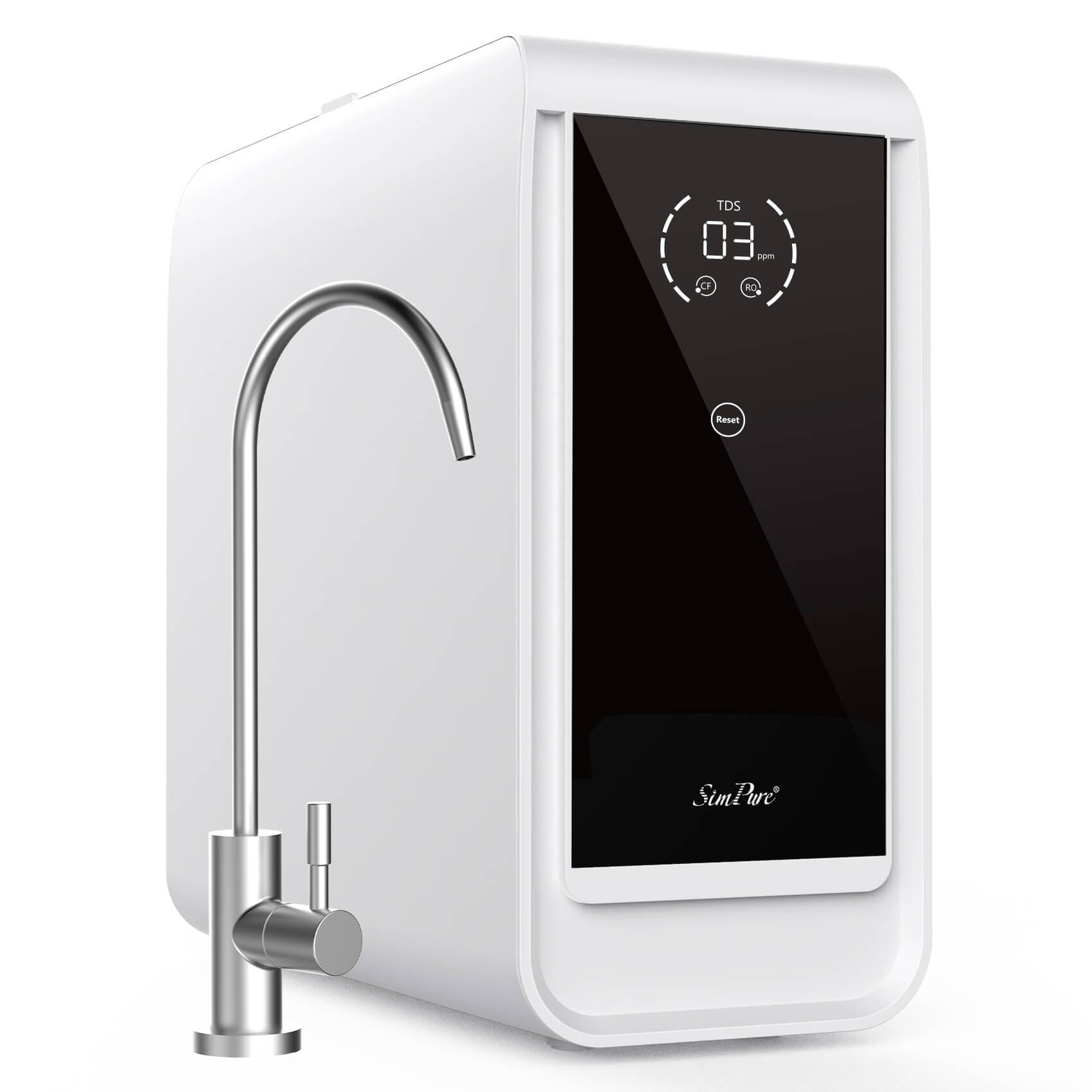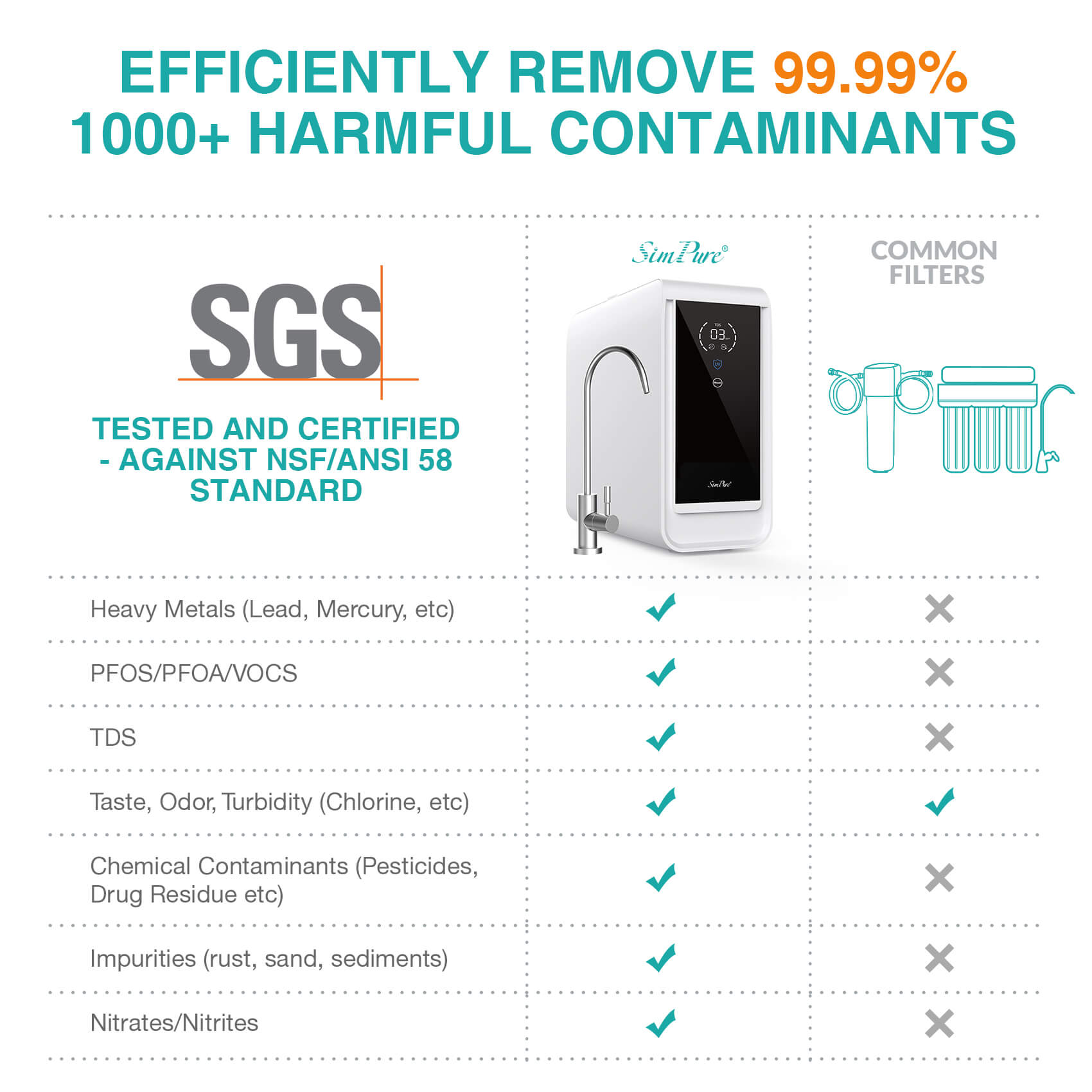Does the tap water at your home have a bad smell or taste, which leads you to spend a lot of money to buy bottled water every day? Imagine how convenient and cost-effective it would be if we could get pure drinking water directly from the tap at our home. Recently, more and more people have chosen to install reverse osmosis systems to improve the quality of drinking water. But are RO systems more valuable? Let’s discover what benefits the reverse osmosis system has in this blog.
What Is a Reverse Osmosis System?

A reverse osmosis system is an advanced water filtration method that removes contaminants using a semi-permeable membrane. It works by applying pressure to force water through the membrane, blocking impurities like heavy metals, chemicals, and bacteria while allowing clean water to pass through.
RO systems are widely used for drinking water purification in homes, businesses, and industries. Unlike standard filters, RO provides a high level of purification by eliminating up to 99% of harmful substances, including chlorine, lead, and fluoride.
5 Key Benefits of Reverse Osmosis Systems
Reverse osmosis systems offer more than just basic filtration—they provide high-quality, purified water that’s free from harmful contaminants. Whether you’re looking for better taste, improved health, or cost savings, an RO system delivers multiple advantages. But what makes it stand out from other filtration methods? Let’s dive into the top five benefits of installing a reverse osmosis system and how it can improve your daily water consumption.
1. Reverse Osmosis Systems Can Remove bad smells and tastes.
Reverse osmosis systems can effectively remove unpleasant odors and tastes from water. This is achieved through their multi-stage filtration process and advanced RO membrane technology.
✅Why It Works
Multi-Stage Filtration: RO systems typically include sediment filters, activated carbon filters, the RO membrane, and a post-carbon filter.
Activated Carbon Filters: These are crucial for removing odors and tastes by adsorbing chlorine, volatile organic compounds (VOCs), and other chemicals.
RO Membrane: With a pore size of 0.0001 microns, it removes dissolved solids, heavy metals, and other taste-altering substances.
Post-Carbon Filter: Enhances water taste for a fresh, clean finish.
✅What Smells and Tastes Are Removed?
- Chlorine
- Metallic or rusty taste
- Rotten or musty odors
- Bitter or earthy flavors
- Sulfur (rotten egg smell)
As long as your RO system is properly designed and filters are replaced regularly, it can significantly improve both the taste and smell of your water. If the odor persists, it's likely time to change the filters or inspect the water source.
2. Reverse Osmosis Systems Can Remove Additives and Contaminants
RO systems use a semipermeable membrane with extremely tiny pores (around 0.0001 microns) that allow only pure water molecules to pass through while blocking most dissolved solids, chemicals, and impurities.
They also include pre-filters (like sediment and activated carbon filters) that trap larger particles and neutralize chemicals before the water reaches the RO membrane, improving both efficiency and water quality.
✅ What Specific Contaminants Can Be Removed by RO systems?
- Chlorine and chloramines (common water additives)
- Fluoride (often added to municipal water)
- Lead, mercury, arsenic, nitrates, sulfates
- PFAS (forever chemicals)
- Pesticides and herbicides
- Pharmaceuticals and hormone residues
- Microplastics
- Sediment, rust, and dirt
RO systems are highly effective at targeting both man-made additives (like fluoride and chlorine) and naturally occurring or industrial contaminants (like heavy metals and nitrates). If you’re concerned about what’s in your tap water, a reverse osmosis system is one of the most comprehensive solutions available.
3. Reverse Osmosis Is More Convenient
RO systems are more convenient—especially for households that care about water quality and want to simplify daily routines.
✅ Why Reverse Osmosis Is More Convenient?
1. Always-Available Clean Water
Unlike pitcher filters or faucet attachments that filter slowly or need manual filling, RO systems provide a continuous supply of clean water—instantly.
2. One System, Many Uses
Enjoy RO water for drinking, cooking, making coffee, washing produce, and more—all from a single tap. Pitcher filters typically can’t keep up with household demand.
3. Less Frequent Maintenance
RO systems usually require filter changes every 6–12 months. In contrast, pitcher filters may need changing monthly, and faucet filters often clog or degrade faster.
4. Better Contaminant Removal
RO systems remove a broader range of contaminants, including fluoride, heavy metals, and nitrates—many of which basic filters can't eliminate.
5. Space-Efficient, Modern Design
SimPure’s RO systems offer sleek countertop or under-sink models that save space and reduce clutter—no more pitchers in the fridge or bulky faucet attachments.
4. Reverse Osmosis System Is More Cost Efficiency & Eco-Friendly.
By installing RO systems, there’s no need to buy bottled water or order jug delivery services with a reverse osmosis system. In 2020, the average price of a bottle of water was $1.17. Considering that a standard bottle of water contains 16.9 fluid ounces, it takes about 8 bottles to make one gallon, resulting in bottled water costing over $9.00 per gallon. Unfortunately, a large number of bottles are not recycled and end up in oceans and landfills. By choosing a quality reverse osmosis system and using reusable water bottles, you can contribute to reducing this environmental impact.
5. RO Systems Are Easy to Maintain With Long-Lasting Filtration.
RO systems are designed for convenience, requiring minimal maintenance while providing long-lasting filtration. Most systems feature durable filters that only need replacement every 6 to 12 months, depending on usage and water quality. The membrane, the core filtration component, typically lasts 2 to 5 years. Regular maintenance involves simple steps like filter changes and occasional system sanitization. Many modern RO systems come with filter change indicators, making upkeep effortless. Compared to other filtration methods, RO systems offer a hassle-free way to ensure clean water without frequent maintenance, making them a reliable and cost-effective choice for households and businesses alike.
Get SimPure RO Systems, Feel the Benefits at Home
 As we’ve discussed the importance of a reverse osmosis system, the SimPure Y7T-BW-A stands out as an excellent choice for clean, healthy hydration. Its 5-stage filtration removes over 99.99% of contaminants like TDS, fluoride, heavy metals, and VOCs. The alkaline remineralization filter adds back vital minerals such as calcium, magnesium, and potassium, balancing the pH for smoother, healthier-tasting water.
As we’ve discussed the importance of a reverse osmosis system, the SimPure Y7T-BW-A stands out as an excellent choice for clean, healthy hydration. Its 5-stage filtration removes over 99.99% of contaminants like TDS, fluoride, heavy metals, and VOCs. The alkaline remineralization filter adds back vital minerals such as calcium, magnesium, and potassium, balancing the pH for smoother, healthier-tasting water.What makes the SimPure Y7T-BW-A Countertop RO System unique is its portable glass pitcher, allowing you to enjoy fresh, purified water anytime, anywhere. No installation is required—just plug it in and start drinking. With an eco-friendly 4:1 pure-to-drain ratio, it conserves water while providing up to 528 gallons of purified water. Plus, its quick-change filter system makes maintenance a breeze.
If you're looking for an efficient, eco-friendly, and easy-to-use water filtration system, the SimPure Y7T-BW-A is the perfect fit for your home or office. Also, if you don't want the alkaline water, there are also SimPure Y7T-BW-C for your option; SimPure Y7T-C features a portable pitcher design and utilizes a 5-stage filtration system without UV treatment. Its final-stage filtration (CTO)-[not alkaline filter] is housed in the external glass kettle for enhanced water purity.
Bonus: How Much Does a Reverse Osmosis Cost?
The cost of a reverse osmosis system depends on different models and other individual functions. If you’re trying to find out if a reverse osmosis system is worth the money you cost, no matter which model you’re considering, the following are the top you need to focus on:
1. How important is access to high-quality drinking water for you?
Having purified water at your fingertips can improve your health, taste, and overall well-being. How much would that convenience and peace of mind be worth? What specific water issues are you trying to solve?
2. Are you dealing with high levels of chlorine, heavy metals, or bacteria?
The right RO system can address these concerns, offering a solution tailored to your needs.
3. How much could you save by ditching bottled water?
Bottled water can be costly, not to mention environmentally damaging. Over time, investing in an RO system can save you money compared to buying bottled water every day.
4. How much time and effort will an RO system save you?
No more filling up pitchers or waiting for water to filter. With a reverse osmosis system, you can have purified water instantly for drinking, cooking, or even making coffee.
5. How confident are you in the system's reliability?
When you choose SimPure, you’re backed by a team of trained professionals who are dedicated to helping you get the most out of your RO system.
Still unsure about which filter is best for your household? SimPure’s Water Filter Buying Guide can help you make an informed choice, with options designed to target specific contaminants.
If you're asking, "Why do I need a reverse osmosis system?", the answer is clear. RO systems effectively filter out unwanted contaminants, making your tap water much healthier. With SimPure RO systems, you don’t just get clean water, but peace of mind knowing you’re drinking the best. Just explore our options now!
Related Blogs You May Like: Want to learn more about what reverse osmosis can do? Explore these helpful articles to better understand how RO systems work and what they remove from your water:
- Does Reverse Osmosis Remove Microplastics?
- Does a Reverse Osmosis System Remove Bacteria and Viruses?
- Does Reverse Osmosis Remove Forever Chemicals (PFAS)?
- Does Reverse Osmosis Remove Pharmaceuticals and Drugs from Water?
-
Does Reverse Osmosis Remove Heavy Metals?
-
Is Reverse Osmosis Water Good for You?



